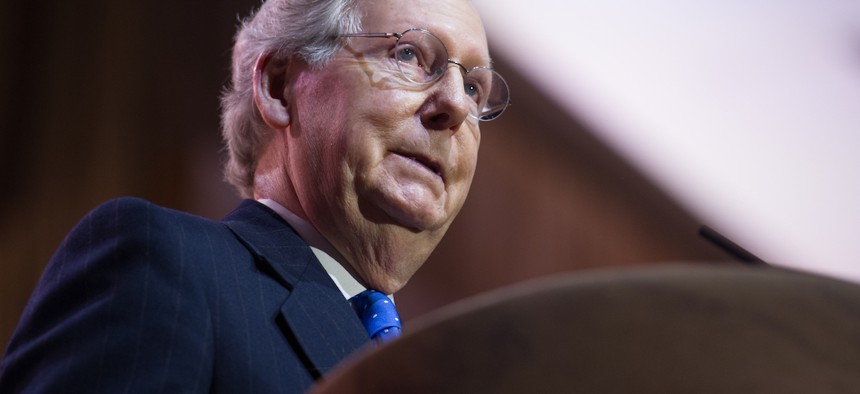U.S. Senate Majority Leader Mitch McConnell dismissed the idea of giving federal funding directly to cash-strapped states last week, instead proposing legislation to allow states to file for bankruptcy. Such a move could jeopardize pension payments for retired public employees in many states, but that threat may be less severe in New York.
“There’s not going to be any desire on the Republican side to bail out state pensions by borrowing money from future generations,” McConnell said on Hugh Hewitt’s conservative talk radio show on April 22, directly alluding to the possibility of reneging on pension obligations as an alternative to federal aid. And if Congress did push forward federal funding for states, he said that “we’ll certainly insist that anything we’d borrow to send down to the states is not spent on solving problems that they created for themselves over the years with their pension programs.”
New York’s pension fund is currently in a better position compared with many other states, making McConnell’s threat less severe for New Yorkers right now. The pension fund was valued at $225.9 billion in December, according to its third quarter report. New York was just one of eight states that had their pension funds at least 90% funded in 2017, according to the Pew Charitable Trusts. But with markets melting down because of the COVID-19 pandemic, public pension investment losses have collectively reached about $1 trillion, according to Moody’s Investors Service.
New York state is no exception, though the extremity of the losses remains to be seen. “The good news is, from what I’ve seen in the preliminary numbers, it’s not anywhere near the drop we experienced in ‘08 and ‘09 when the markets tanked in connection to the global financial crisis,” State Comptroller Thomas DiNapoli, who oversees the pension fund, told City & State. The 2008 financial crisis resulted in a $45 billion hit to the plan’s assets.
DiNapoli has promised that, for now, the state’s pension checks will continue to be sent out despite the pandemic. But depending on how volatile the market remains and how market returns look next March, when the pension fund will get valued again, the situation could worsen.
“The concern I have, really, is less for the retirees of today, because we have money for them,” he said. “It’s really for the person starting work today, not retiring for 25, 30 years.”
Government employers may also face increased contributions to the pension funds, given the financial situation in the short-term, DiNapoli said.
Mary Sullivan, president of the Civil Service Employees Association, said she was concerned about what would happen to pensions for future retirees. “Long-term, I would be very concerned that the pension fund be harmed in such a way that it may affect our retiree members and future retirees going forward,” she said. “The economy of the state is very important to the success and the strength of that pension fund.”
But Andy Pallotta, who leads New York State United Teachers, said he had faith that pensions would be safe because they’ve been “extremely well-funded and well run.”
McConnel’s proposal to allow states to file for bankruptcy would reduce their obligation to pay out pensions. Previous attempts to allow states to file for bankruptcy faced widespread criticism from governors in both parties, public sector unions and Wall Street investors. Such a proposal would also likely be considered unconstitutional.
It's no surprise that public sector unions and New York elected officials have equally disparaged McConnell’s comments. “By cutting New York off, he’s cutting everybody’s throat,” Sullivan said, citing an argument made by Gov. Andrew Cuomo that New York contributes more in federal dollars than it gets back unlike Kentucky, which McConnell represents.


